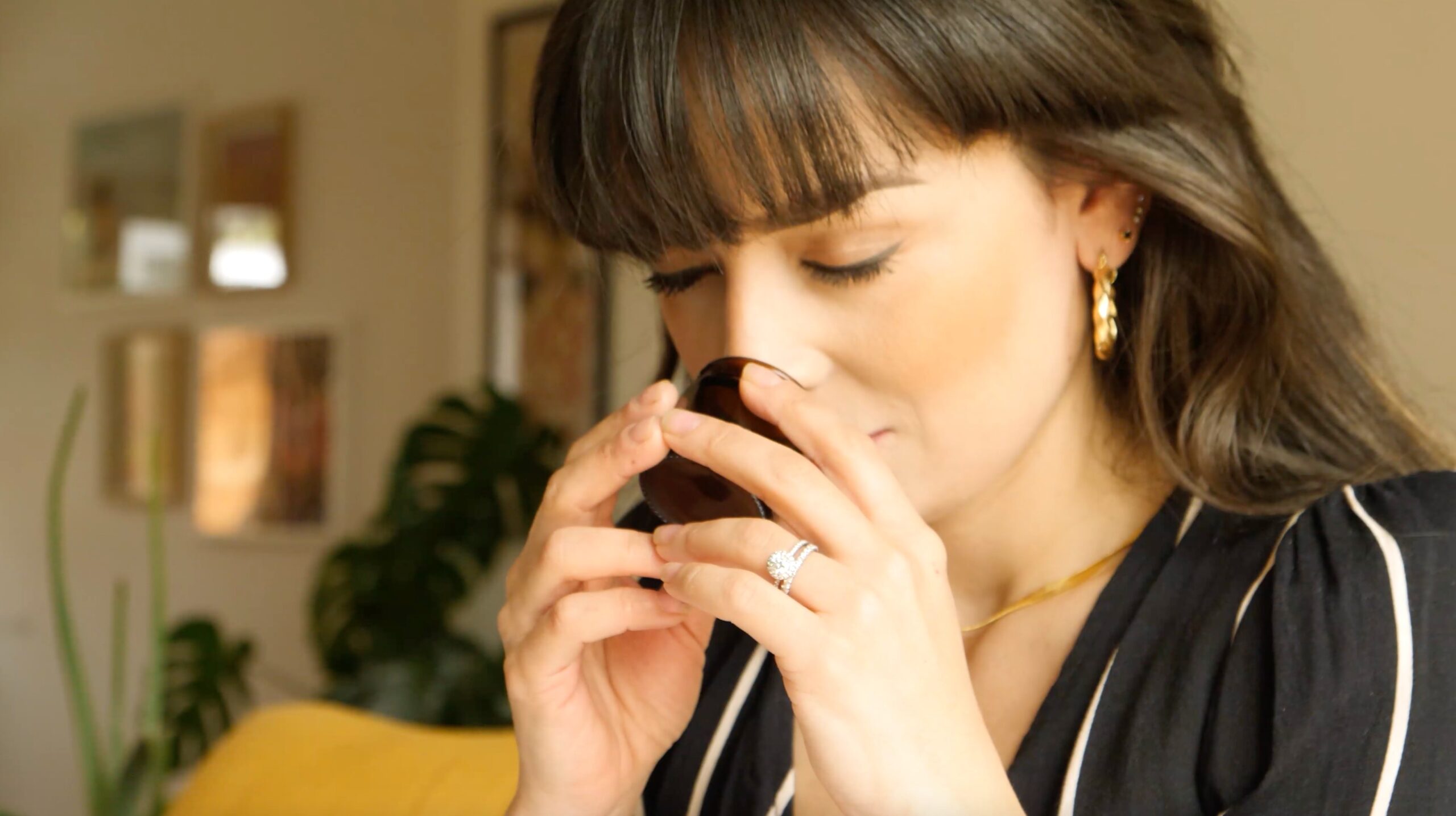Questions linger around COVID-19 and restoring smell
New evidence shows that human olfactory tissue is likely able to regenerate. But more research needs to be done to determine what exactly is damaged in cases of olfactory loss
Julie Levy • April 7, 2021

To recover her sense of smell, Mariana Castro-Salzman practices smelling essential oils such as lavender, peppermint and lemongrass. [Credit: Julie Levy]
Eight days after contracting the novel coronavirus, Mariana Castro-Salzman was cleaning her house with bleach when she realized she couldn’t smell anything at all.
A couple of months later, her ability to smell gradually returned — but it was distorted. Pleasant smells like coffee and barbeque now gave off the scent of burnt rubber.
This condition, called parosmia, has deeply affected her mental health and well-being. Since experiencing parosmia, Castro-Salzman has dealt with depression and anxiety. Losing the ability to savor the taste of food and enjoy dining out with friends made her feel disconnected from life.
Olfactory dysfunction has affected anywhere from 34 to 68% of patients afflicted with COVID-19, according to a review of 21 studies. While most patients who experience olfactory loss regain their sense of smell within two months of being infected, a study of 189 patients in the United Kingdom found that 12 patients continued to report a total loss of smell six months after having been diagnosed with COVID-19.
In the case of parosmia, research has shown that distorted smells are due to missing smell receptors.
“Odors are coded like words,” says Dr. Thomas Hummel, a researcher in the Smell and Taste Clinic at the Technical University of Dresden. When we read a word, we perceive a pattern. For example, the word “rose” is made up of the letters R, O, S, and E and together they produce a pattern. Our noses have receptors for each individual component that makes up a rose’s scent. However, a person with parosmia lacks some of the smell receptors needed and as a consequence, the smell they perceive is distorted, Hummel explains.
According to a study of 91 patients, almost one-third still had olfactory impairments eight weeks after the initial onset of olfactory loss due to COVID-19. Despite olfactory complications being so widespread today due to the pandemic, there hasn’t been much research in the field.
“It’s been a somewhat underappreciated clinical problem,” says Dr. Bradley Goldstein, an ear, nose and throat doctor and researcher at Duke University.
As far as we know, olfactory disorders have never been as widespread as they are now. So much remains unknown about how and why olfactory tissue is damaged and the extent to which it can regenerate. While it has long been established that animal olfactory tissue is capable of healing to some extent, it wasn’t clear that this phenomenon happens in humans too until Goldstein’s 2020 analysis of human nasal tissue showed that human olfactory neurons can continue to grow for decades.
Olfactory tissue regeneration may help explain the success of olfactory training in some patients. Classical olfactory training involves the structured sniffing of a defined set of four different odors, twice a day for a period of four months or longer. A review of 1,981 studies found that patients who practiced olfactory training for a duration of nine months were almost three times more likely to improve their overall ability to detect smells and tell them apart.
Emerging research has found that administering intranasal insulin and steroids in patients may also improve smell. A study of a treatment used to improve mobility in patients with Parkinson’s disease, which consists of implanting a small device that sends electrical signals to the brain, has also been shown to improve patients’ success in identifying smells.
But Goldstein stresses that many of these studies identifying potential solutions to olfactory loss are premature. First, more research needs to be done to identify the reason for the olfactory tissue damage.
“It’s really hard to repair something if we’re not exactly sure what it is we’re trying to fix,” Goldstein says.
The severity of Castro-Salzman’s parosmia fluctuates day to day. But she’s gotten some moments of relief. The first time she was able to smell her dog, she was overwhelmed with emotion.
“It’s just a dog smell. It’s not particularly great, but it’s just an everyday smell that just brought me back to my pre-parosmia life,” she says.
Goldstein hopes that the attention that olfactory loss has received since the start of the pandemic will help researchers identify new therapeutic strategies.
“One potential upside from this terrible pandemic is that this problem of olfactory loss and the obvious unmet need for effective therapies is getting a lot of attention now,” Goldstein says. “And I think that will motivate some funding for some new research and new clinical trials.”